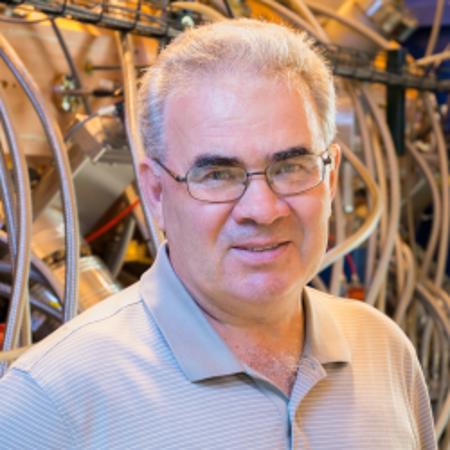Peter Nikolayevich Ostroumov
Professor, Department of Physics & Astronomy
Location: 5304 640 S Shaw Ln Room 5304
Phone: 517-908-7412
Email: ostroumo@msu.edu
Bio
Peter Ostroumov joined the FRIB as a Professor in August 2016, with a joint appointment to the MSU Department of Physics & Astronomy. He is the Associate Director of the FRIB Accelerator Systems Division. Before coming to MSU, Ostroumov was a senior physicist and chief of the accelerator development group at the Argonne National Laboratory. His statement of research interests follows. Particle accelerators are major tools for discovery in nuclear physics, high energy physics, and basic energy science. A new national-user facility for nuclear science, Facility for Rare Isotope Beams, is based on a state-of-the-art 400 kW superconducting linear accelerator. The FRIB employs many accelerator physicists and engineers and attracted significant DOE funding for the education of graduate students under the ASET program. Currently, the FRIB is approaching the commencement of user operation. The main focus of the Accelerator Physics Department is on a detailed understanding of beam physics issues in this new facility to achieve the design beam power and deliver a wide selection of isotopes to the experiments. A significant innovative engineering effort will be necessary to achieve routine operation with 400 kW beam power. At the same time, R&D for future FRIB upgrade scenarios is being pursued to enable new high-priority and high-impact research opportunities. This task requires strong communication between accelerator physicists, engineers, and nuclear physicists to understand the highest priority research. The list of possible short-term and mid-term accelerator R&D goals includes the development of a cost-effective option for a high energy upgrade of the FRIB driver linac, which will be based on newly developed medium-beta superconducting (SC) cavities capable of doubling the energy of FRIB beams over the available space of 80 meters. Other R&D tasks include developing multi-target driver linac operation with the simultaneous acceleration of light and heavy ions; development and implementation of techniques to increase efficiency for delivery of radioactive ion beam species to the user experiments, the post-accelerator and their post-acceleration. The long-term accelerator R&D will enable the world's best science at an expanded FRIB, which may include storage rings and a radioactive-ion-electron collider. These accelerator R&D topics open vast opportunities to involve Ph.D. students and post-doctoral researchers. In the past 10 years, I have guided a group of scientists, engineers, young researchers, students, and technicians who have developed and implemented several innovative accelerator systems such as high-performance SC cavities and cryomodules, a CW RFQ with trapezoidal vane tip modulations, an EBIS for the fast and efficient breeding of radioactive ions, designed and demonstrated several new accelerating structures for ion linacs, developed and built bunch length detectors for CW ion beams, and profile and emittance measurement devices for rare isotope beams. I eagerly look forward to applying this expertise to new and challenging technical issues with students and post-docs at FRIB. # Education: * 1993: Doctor of Science, Moscow Engineering Physical Institute
Selected Publications
- Beam commissioning in the first superconducting segment of the Facility for Rare Isotope Beams. P.N. Ostroumov, et al., Phys. Rev. Accel. Beams 22, 080101 – Published 7 August 2019.
- Efficient continuous wave accelerating structure for ion beams, P.N. Ostroumov, et al., Phys. Rev. Accel. Beams 23, 042002 – Published 8 April 2020.
- Elliptical superconducting RF cavities for FRIB energy upgrade, P.N. Ostroumov, et al., Nuclear Inst. and Methods in Physics Research, A 888 (2018) 53–63.
- Practical design approach for trapezoidal modulation of a radio-frequency quadrupole, A. S. Plastun and P. N. Ostroumov, Phys. Rev. Accel. Beams 21, 030102 (2018) - Published 19 March 2018.
